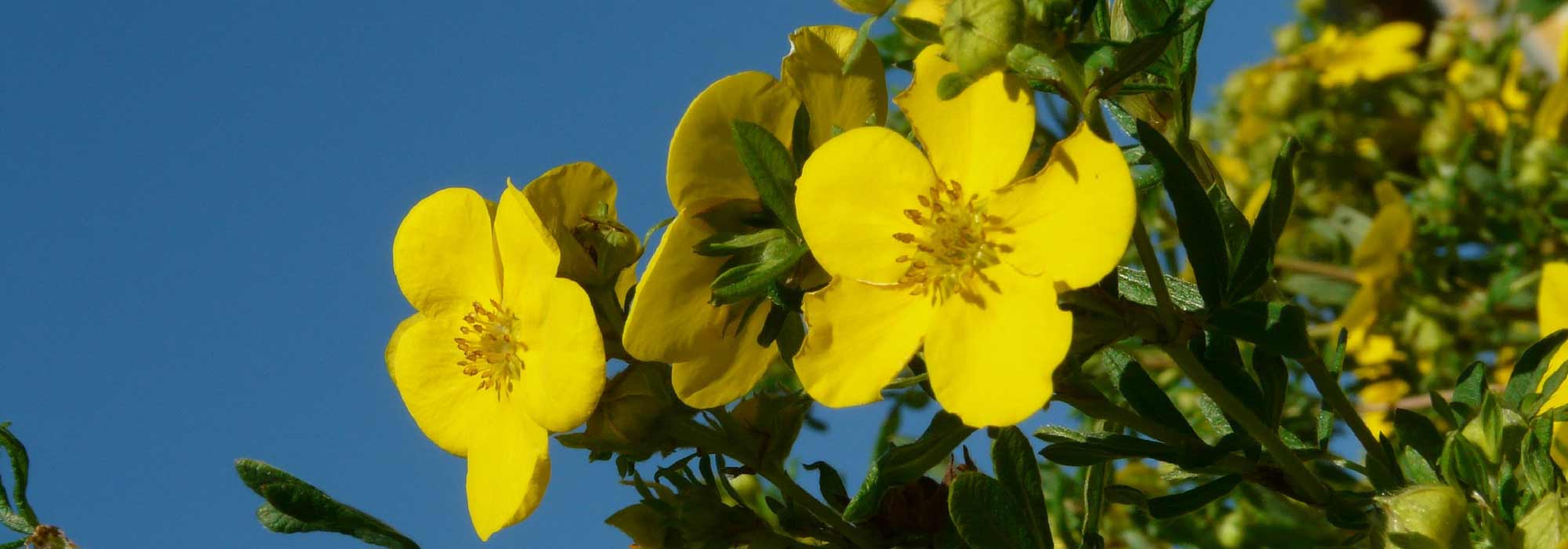
Cinquefoil, potentilla: planting, caring, pruning
Contents
Potentilla in a nutshell
- Potentillas offer a generous and very long summer flowering period that lasts from June until the first frosts
- The delicate flowers in fiery or pastel colours add a very cheerful touch
- They form rewarding flowering bushes that are foolproof in well-drained soil, ideal for beginner gardeners!
- It is one of the best bushes for low-maintenance gardens
- Compact, very hardy (-25°) and drought-resistant, they thrive in all gardens, in flowering beds, rockeries, borders, low hedges or in pots on balconies
A word from our expert
The Potentilla is a charming little bush appreciated for its generous flowering from May to September. Pink potentilla, white potentilla, orange potentilla, yellow potentilla, or red bush potentilla, there are varieties of potentilla to suit every taste!
Bush potentillas can reach a height of 1.50 m, while the lovely perennial potentillas do not exceed 50 cm in height, making them suitable for placement anywhere: in flower beds, rockeries, borders, low hedges, and even in containers on a terrace or balcony.
With its lovely bushy silhouette, compact form, and moderate size, this little bush is perfect for quickly creating a colourful punctuation in all gardens, from the most naturalistic to the most structured. It is the perfect plant for weekend gardens or for those without gardeners.
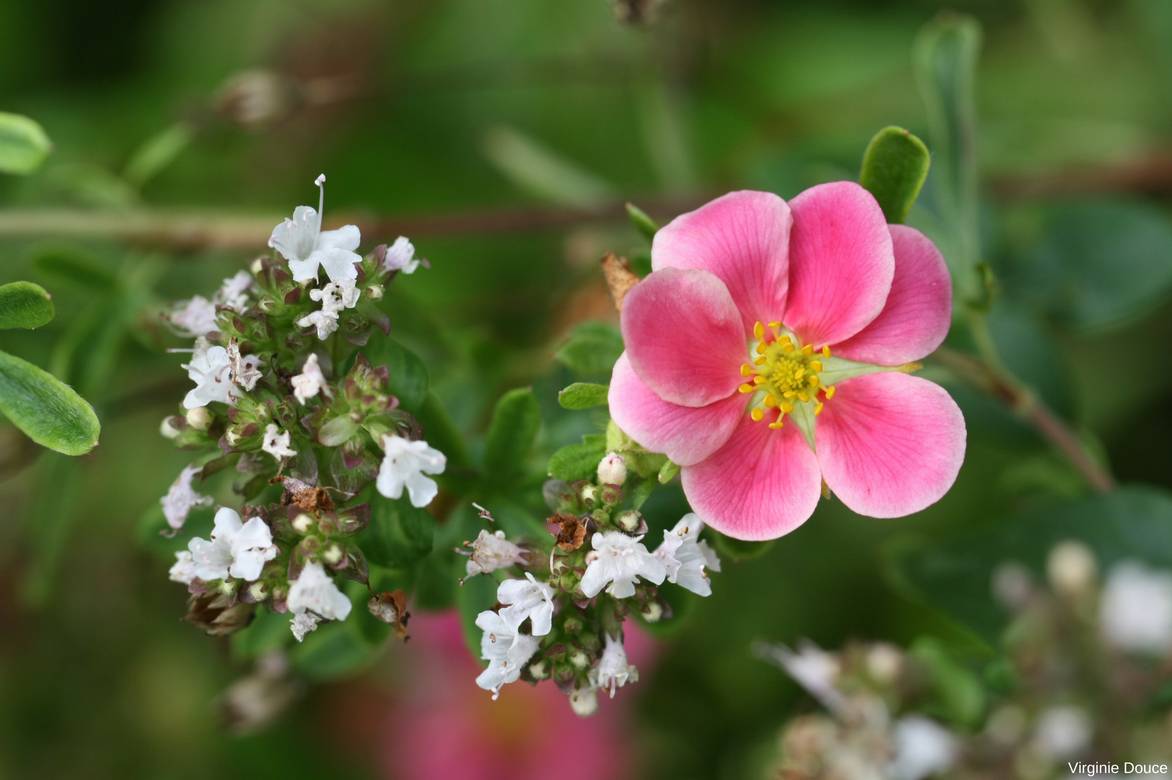
Potentilla fruticosa ‘Pink Paradise’.
This flowering bush with the appearance of a small wild rose is ideal for introducing budding gardeners to the joys of easy gardening and brightening up the garden or balcony, sustainably and with minimal effort!
A worry-free plant, generously floriferous, the potentilla grows in full sun or partial shade in all regions. Very hardy and highly drought-resistant, it thrives in permeable, poor, even stony, well-drained soils.
The potentilla is a reliable, timeless choice and very easy to grow. Adopt this lovely very accommodating bush without delay and discover our unique collections of bush potentillas and perennials!
Description and Botany
Botanical data
- Latin name Potentilla fruticosa
- Family Rosaceae
- Common name Shrubby cinquefoil
- Flowering from May to September
- Height 0.50 to 1.50 m
- Exposure sun, partial shade
- Soil type calcareous, neutral, well-drained
- Hardiness -15°C to -25°C depending on the variety
The genus Potentilla includes approximately 500 species of shrubs, mostly herbaceous perennials along with a few annuals and biennials growing in various environments ranging from meadows to montane scree in the Northern Hemisphere. The Cinquefoil belongs to the large family of Rosaceae, just like apple trees and photinias.
It naturally grows in France, for instance, in certain mountainous areas between 900 and 2,000 m in altitude. Potentilla fruticosa, the shrubby cinquefoil, is the only species of shrubby cinquefoil commonly cultivated: it is the shrubby cinquefoil or woody cinquefoil. This undershrub has given rise, with the help of breeders, to numerous remarkable cultivars, hybrids, and varieties such as Potentilla fruticosa ‘Lovely Pink®’ with soft pink flowers or Potentilla fruticosa ‘Goldfinger’ with bright yellow flowers.
There are also a few other species of herbaceous perennial potentillas, non-shrubby this time, such as Potentilla megalantha, Potentilla atrosanguinea, Potentilla aurea, or Potentilla nepalensis which form a dense, spreading cushion and are used as ground cover in rockeries.
The shrubby cinquefoil has a bushy, dense, regular, and rounded habit that tends to spread over time. Its rather rapid growth at first slows down with age: the cinquefoil will reach its adult size after 4 to 5 years of cultivation.
It quickly forms a lovely small low bush with dense foliage and numerous highly branched basal stems. Depending on the cultivars and species, its habit varies from more or less spreading, and even sometimes creeping and prostrate.

The flowers of cinquefoils offer a beautiful range of colours: Potentilla fruticosa ‘Mango Tango’, Potentilla fruticosa ‘Crème Brulée’, Potentilla fruticosa ‘Pink Paradise’, Potentilla nepalensis ‘Miss Wilmott’ (photos Virginie Douce).
While the shrubby varieties of Potentilla fruticosa can reach up to 1 to 1.50 m, they rarely exceed 1 m in height at maturity. The perennial cinquefoils form a low tuft not exceeding 50 cm in height, making them ideal for small beds, dry rockeries, and even pots.
The slender, branched, brown stems, sometimes tinged with red, exfoliate with age and bear a deciduous foliage that is both very fine and dense. Elegantly cut, it gives a beautiful lightness to the dark green silhouette of the shrub. The pinnate leaves, 2 to 4 cm long, consist of 5 to 7 narrow leaflets, sometimes serrated. In Potentilla megalantha, a lovely perennial cinquefoil, the broad leaves resemble those of strawberries. Potentilla tridentata ‘Minima’ is one of the few to retain evergreen foliage.
This delicately filigreed foliage, in bluish-green, intense green, or spinach green sometimes turns yellow in autumn and is shiny or more often pubescent, covered with a grey or white hairiness that gives it a very downy and ash-like appearance. The underside is often also covered with silky down. After the leaves fall, the shrub, thanks to the fineness of its branching and its compactness, retains a certain ornamental interest.

Various foliage: Potentilla fruticosa ‘Pink Paradise’, Potentilla hybrid ‘Orange’, Potentilla megalantha, Potentilla ‘Gibson’s Scarlet’.
This foliage that disappears in winter highlights a generous flowering in small cups. Its flowers with 5 petals, 2 to 5 cm in diameter, surrounding golden stamens, appear on the shoots of the year and blossom in successive waves from May-June until the first frosts for the latest varieties, if autumn is mild.
They are sometimes solitary or more often grouped in threes in cymes or terminal panicles and renew themselves throughout the summer, without interruption, making this shrub a charming little flowering and colourful bush. The flowering is more intense between mid-June and mid-September, then it loses a bit of its vigour.
The colours of the flowers vary according to the cultivars, ranging from pastel to the most intense shades. White, pink, golden yellow, vermilion red, carmine red, or bright orange, sometimes bicoloured (‘Mango Tango’), these delicate flowers, mostly single, sometimes double or semi-double, resemble those of a small rose or small wild roses.
Particularly robust and extremely hardy down to -25°C, drought-resistant, the cinquefoil grows in all climates. A very easy-going and accommodating plant, it thrives in sun or partial shade, in ordinary, poor, sandy or even stony and very well-drained soil.
With its bushy silhouette, modest size, and bright flowering, the Cinquefoil finds its place in all gardens, whether large or small. It can be used in multiple ways and planted alone or in groups everywhere, in shrub or perennial beds, rockeries, slopes, flowering borders, or as in low hedges in a naturalistic garden. This small flowering shrub is particularly suited to pot culture on a sunny terrace or balcony.

Evolution of a shrubby cinquefoil flower (Photos Virginie Douce).
Since antiquity, Potentilla anserina has been used in herbal tea for its medicinal virtues and its astringent and antispasmodic properties. The Cinquefoil flower also has a high tannin content, which gives it dyeing properties.
Main species and varieties
Les Potentillas comprise many species including perennial potentillas and shrubby potentillas. In potentillas, the size determines their use. Potentilla fruticosa, the shrubby potentilla and its hybrids (the only species cultivated in France that has given rise to many widely used cultivars in our gardens), sometimes exceeds 1 m in height, while perennial potentillas are dwarf species, reaching a maximum height of 50 cm. They are true stars of borders, sunny rock gardens, or even containers.
All are very hardy, easy to grow, and form a beautiful compact bush remarkably floriferous throughout the summer.

Potentilla fruticosa Pink Paradise - Shrubby Cinquefoil
- Flowering time July to October
- Height at maturity 1,20 m
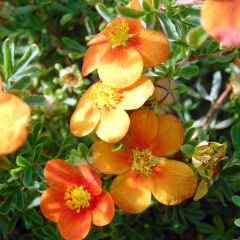
Potentilla fruticosa Hopleys Orange - Shrubby Cinquefoil
- Flowering time June to November
- Height at maturity 1 m
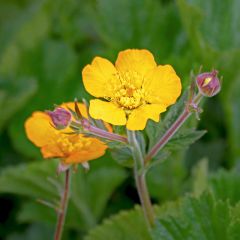
Potentilla megalantha - Cinquefoil
- Flowering time July to September
- Height at maturity 20 cm
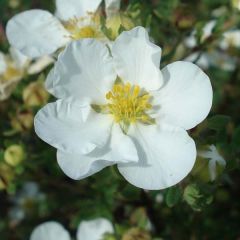
Potentilla fruticosa Abbotswood - Shrubby Cinquefoil
- Flowering time July to October
- Height at maturity 90 cm
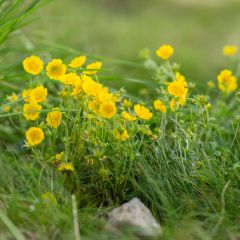
Potentilla aurea
- Flowering time July to September
- Height at maturity 20 cm
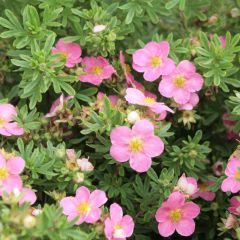
Potentilla fruticosa Lovely Pink - Shrubby Cinquefoil
- Flowering time June to October
- Height at maturity 90 cm
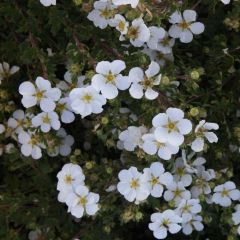
Potentilla fruticosa White Lady - Shrubby Cinquefoil
- Flowering time July to November
- Height at maturity 90 cm

Potentilla Yellow Queen - Cinquefoil
- Flowering time July to September
- Height at maturity 40 cm

Potentilla William Rollison - Cinquefoil
- Flowering time July to September
- Height at maturity 50 cm
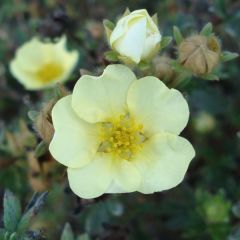
Potentilla fruticosa Primrose Beauty - Shrubby Cinquefoil
- Flowering time July to October
- Height at maturity 1 m
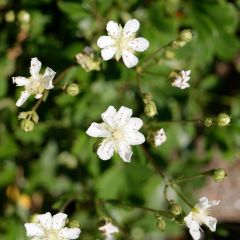
Potentilla tridentata Minima - Cinquefoil
- Flowering time July to November
- Height at maturity 10 cm
Discover other Potentilla - Cinquefoils
View all →Available in 0 sizes
Available in 1 sizes
Available in 1 sizes
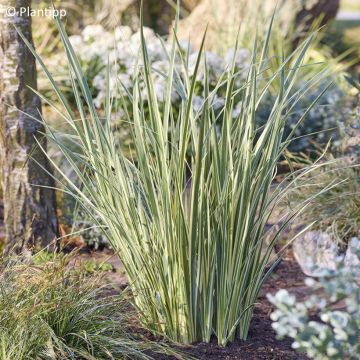
Available in 1 sizes
Available in 1 sizes
Available in 1 sizes
Available in 1 sizes
Available in 2 sizes
Available in 1 sizes
Available in 1 sizes
Planting
Where to plant Potentilla?
The Potentilla grows everywhere in France and is almost resistant to everything, in terms of exposure and soil. Remarkably hardy, it can withstand very low negative temperatures down to -25 °C, sometimes even lower, which gives it perfect resilience in all our regions. It shows a good resistance to pollution and acclimatises easily even in urban gardens.
It is best planted in full sun where it flowers better, although it can tolerate light shade, especially in warmer regions. Too intense exposure may slightly fade the colour of the flowers, particularly the reds and pinks; for these varieties, it is preferable to choose a shaded spot during the hottest hours. In too dense shade, it will tend to become leggy and flower less profusely.
Not very demanding, Potentilla adapts perfectly to any well-drained soil. It is one of the best bushes for rocky environments. It prefers calcareous, poor, or sandy soils, even stony ones (too rich a soil would favour foliage at the expense of flowering).
Its only real requirement is to avoid heavy or waterlogged soils. It appreciates well-draining terrains. If your soil retains moisture, do not hesitate to plant it on top of a mound, on a slope, or in a rock garden where water does not stagnate.
Once well established, Potentilla will easily withstand periods of drought.
It is a compact shrub that fits into any garden. Potentilla can be combined with other fast-growing plants to create an instant garden. Depending on their size, their use varies. The Potentilla fructicosa will be perfect when planted alone or in groups of 3 or 5 for free hedges or flowering beds.
The perennial potentillas of smaller size are well suited for pot cultivation, as ground cover, in alpine rockeries, small low beds, or in mixed borders in a wild garden. Some varieties even retain evergreen foliage: a boon for quickly covering difficult areas!
When to plant Potentillas?
Install the Potentilla plants purchased in a bucket in spring in March-April or in autumn, from September to November, outside of periods of heavy frost.
How to plant Potentilla?
In the ground
Depending on the adult size of your variety of Potentilla, space the plants 0.40 to 0.80 m apart. You can lighten the soil at the time of planting by adding sand and gravel for better drainage.
- Soak the plant in a basin of water to thoroughly rehydrate the root ball
- Dig deeply to remove stones, roots, and weeds
- Dig a hole two to three times wider than the root ball
- Add a good layer of pumice or gravel at the bottom of the planting hole
- Plant the shrub in the centre of the hole so that the collar is level with the soil surface
- Backfill while keeping the plant upright with the extracted soil mixed with a third of planting compost, especially if your soil is heavy
- Firm the soil and create a basin for watering.
- Mulch with pine bark around the base to keep it clean and cool during summer
- Water with 10-15 litres of water at planting, then once or twice a week during growth in the first year to encourage rooting
In a pot
It is quite possible to grow Potentilla in a large pot of at least 25 cm in diameter. It requires a very well-drained substrate. Plant in a mixture of garden soil, planting compost, and river sand in equal parts.
- Spread a good layer of drainage (gravel or clay balls)
- Mulch the base
- Place the pot in full sun
- Water well during the growing season every two or three days
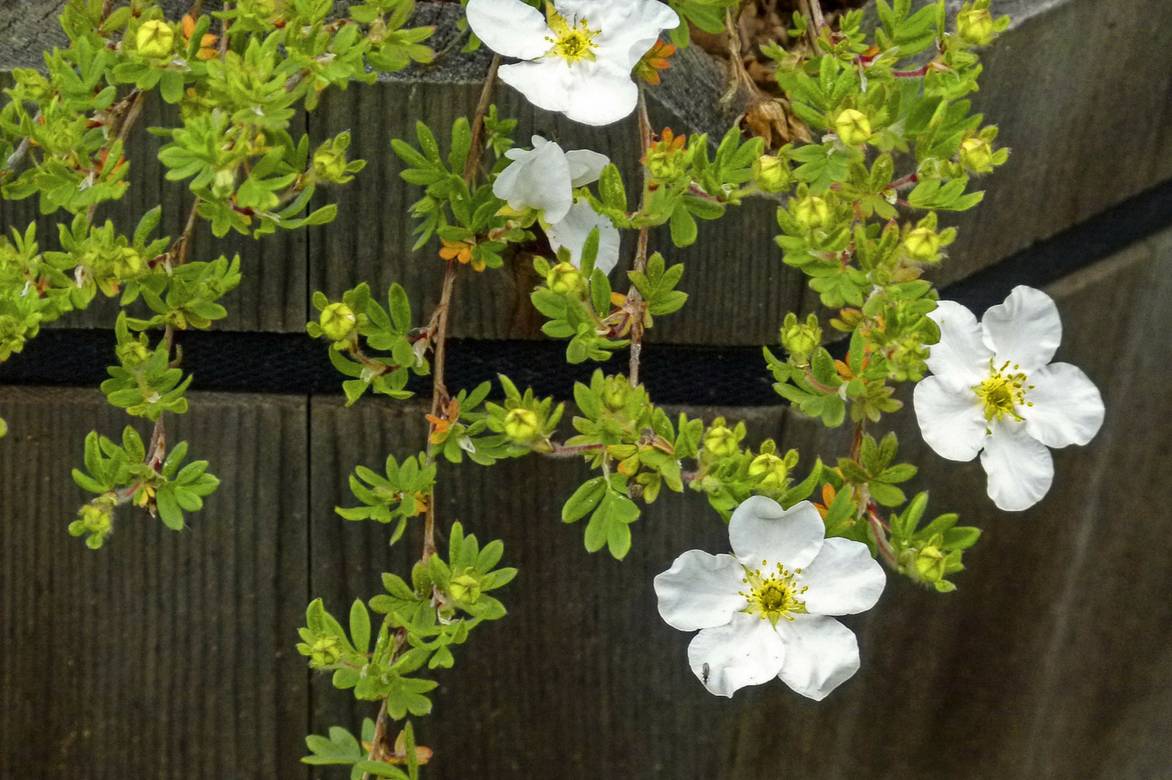
Potentilla ‘Abbotswood’ in a pot.
Care and Maintenance of Potentilla
In open ground
The Potentilla is a low-maintenance bush that does not require special care, no watering (except during the first summers and in case of prolonged drought or high heat), and no fertiliser, as the potentilla grows very well in poor soils.
In pot
Make two applications of fertiliser for flowering bushes, from April to October to stimulate the growth of your Potentilla. During summer, water every 2 or 3 days, as soon as the substrate is dry on the surface.
In autumn and spring, one watering per week will suffice. In winter, reduce waterings to once a month or every 15 days. Repot every 2 or 3 years, renewing only part of the substrate.
For ground cover varieties, remove suckers if necessary that root around the perimeter of the plant, to prevent it from becoming too invasive.
Pruning of the bush potentilla
When and how to prune Potentilla fruticosa?
The flowers of the potentilla appear on the shoots of the year. A simple annual refresh pruning, in early spring and using shears, from February to March, is necessary. Relatively simple and quick given the proportions of the bush, this light pruning helps to maintain a lovely bushy shape, stimulate the growth of new stems, and ensure abundant summer flowering: over time, the bush tends to become bare at the base.
- With pruning shears, reduce the faded stems by half from the previous year
- Remove the oldest stems, dead, thin, or too tangled
- During summer, slightly trim with shears the tips of the faded stems to encourage a new flowering
- You can also remove faded flowers as they appear to prolong the flowering for a long time, although this can be quite tedious
Older potentillas whose annual pruning has been neglected can be cut back more severely to a few centimetres above the ground at the end of winter.
Diseases and potential pests
Robust and resilient, the Cinquefoil is rarely diseased. When planted in suitable growing conditions, it is a hardy bush resistant to pests. Powdery mildew is the most common disease affecting Cinquefoil, especially when it is planted in too much shade. Red spider mites and aphids in summer or spring are also likely to attack the plant.
To combat powdery mildew, spray with Bordeaux mixture, use soapy water on the aphids, and simply shower the foliage in the evening to dislodge the red spider mites.
Multiplication: cutting and layering
You can propagate easily the Cinquefoil by propagation by cuttings or layering.
Propagating the cinquefoil by cuttings
Perform the cutting in summer during August, using the tips of young stems from the current year that are semi-woody, meaning they are harder and more lignified. Propagation by cuttings of hardwood is also possible from November to February.
- Using pruning shears, cut 10 cm long shoots just below an eye
- Remove the leaves from the bottom of the stem
- Plant the cuttings in buckets in a mixture of coarse sand and well-matured potting soil or compost
- Keep the substrate moist until rooting
- Once well-rooted, gently separate the cuttings and repot them individually into larger pots filled with potting soil
- Keep protected from frost in winter
- Plant in the ground the following spring
By layering through separation of suckers
The cinquefoils are prone to layer naturally: they easily multiply by separating the young rooted shoots around the clump.
- In October, use a spade to take several shoots around the mother plant
- Replant immediately in the garden or in pots, the divisions in well-worked light soil

Sowing of Potentilla fruticosa ‘Mango Tango’… the sowings are not true to the mother plant.
Associating the cinquefoil
The Cinquefoil is remarkable for its profusion of white to golden-yellow flowers, sometimes pink, orange-red, or peach, that it offers throughout the summer. Compact and easy to care for, it has its place in all natural and wild gardens or more structured ones, where it adds a compact touch and a splash of colour, creating a romantic look.
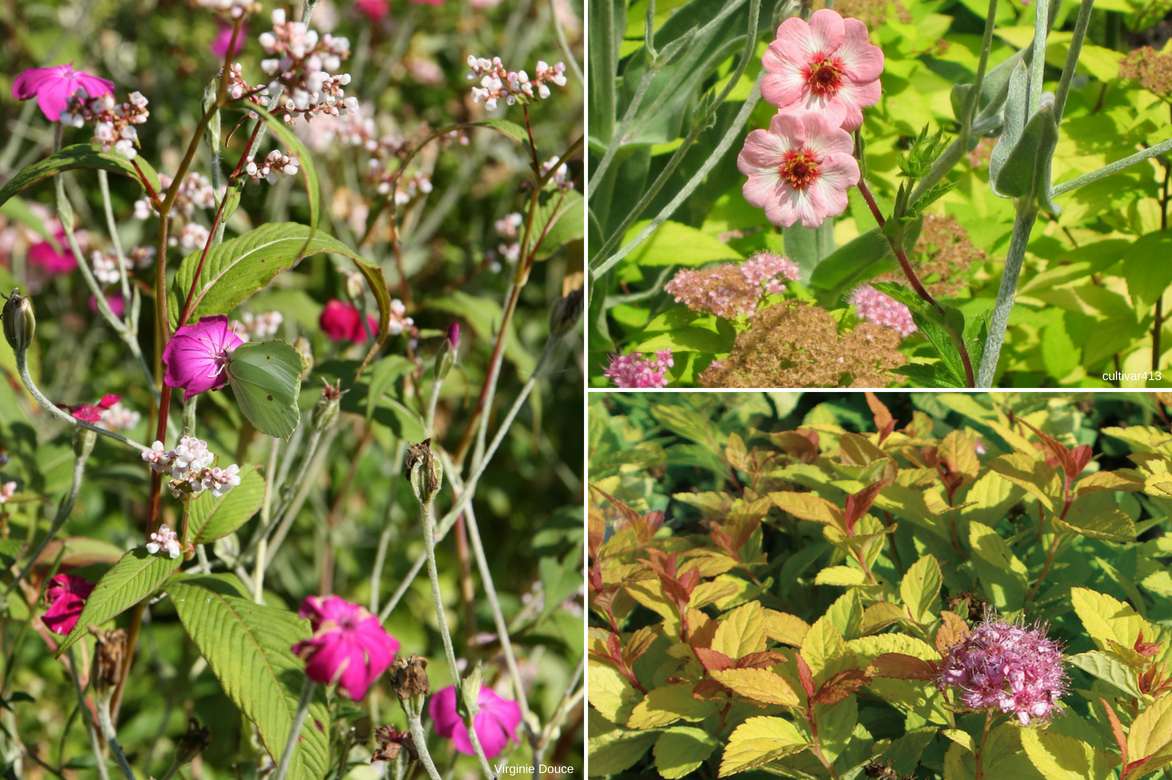
Natural association: Potentilla x hopwoodiana, Lychnis coronaria, Persicaria campanulata, Spirea japonica ‘Golden princess’.
With its rose-like appearance, it can be planted alone or in groups anywhere: in shrub borders or flowering edges, rockeries, untrimmed low hedges, or in lovely pots on sunny balconies and terraces.
The combinations are virtually endless.
In a shrub border, it will create beautiful colourful atmospheres with all types of summer-flowering shrubs such as buddlejas, philadelphus, lavateras, spireas, weigelias, abelias, lavateras, hydrangeas, and hibiscus.
Its silhouette pairs well with that of Olearia virgata and bush veronicas. The sunny flowering of the yellow-flowered cultivars (‘Goldfinger’) will accompany that of Hypericum.
With its low height, it will complement associations of full sun perennials and add volume to a lush border, alongside Achillea millefolium, Allium, symphorines, hardy geraniums, Dahlias, Iris germanica, Rudbeckias, and Kniphofias.
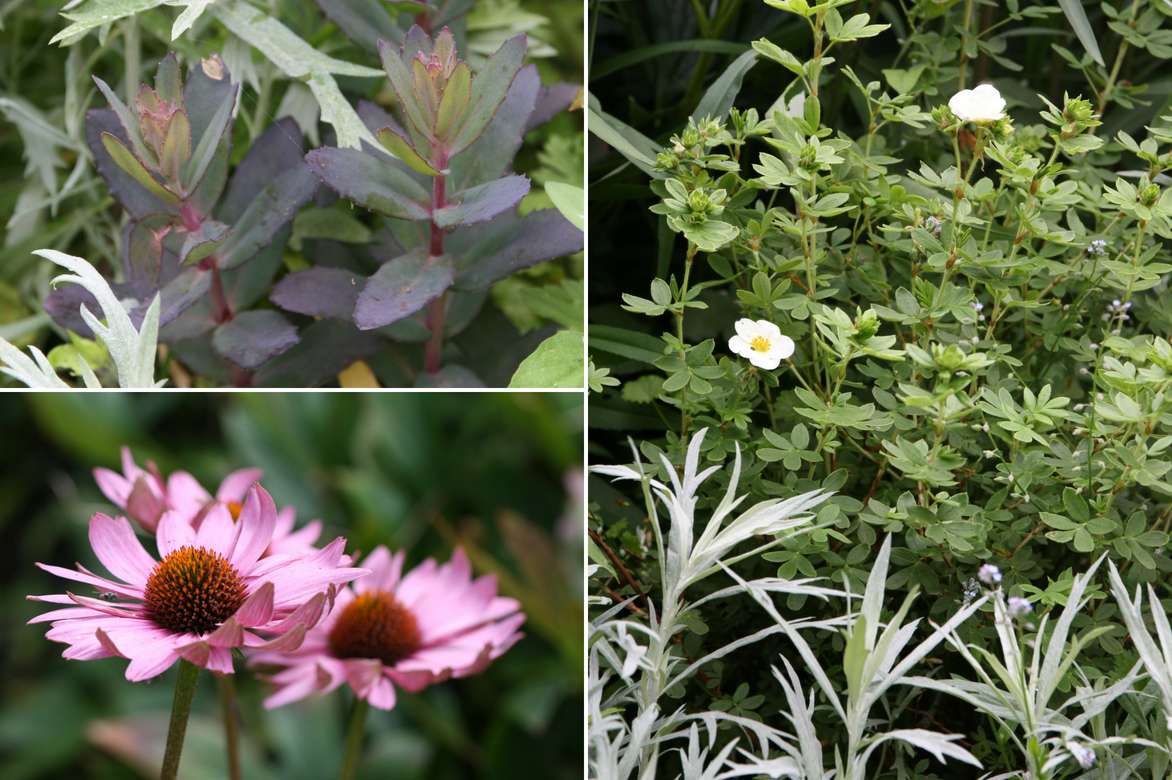
Association for full sun: Sedum ‘José Aubergine’, Echinacea purpurea, Potentilla fruticosa ‘Crème Brulée’, Artemisia ludoviciana ‘Silver Queen’ (Photos Virginie Douce).
To create a very graphic scene, it can be paired with plants that have more pronounced shapes, taller habits, or a more tousled and airy appearance, such as grasses (bottlebrush grass), Phormium, bronze fennel, daylilies, Eryngium, and Crocosmias.
The Cinquefoil finds its place in associations with warm colours and the green-yellow or glaucous foliage of Variegated Spurge, forming a lovely contrast with blue flowers such as those of caryopteris, Perovskia, Italian Buglosses, or Ceratostigma.
It appreciates partners like old-fashioned and shrub roses and ideally associates in a low hedge with mediterranean plants such as Lavenders, Rosemary, Cistus, and Pittosporum, for a natural, warm, and fragrant atmosphere.
In the foreground of a border or mixed border, it will thrive alongside coreopsis, stonecrops, wallflowers, helianthemums, nigella, wild flax, thyme, santolines, or poppies.
On a slope, at the centre of a bed of low or ground-cover plants, it will look magnificent surrounded by perennials and rock garden plants, small cistus (Cistus x pulverulentus, Cistus x skanbergii), dwarf or creeping conifers, creeping Ceanothus, and creeping junipers, alongside landscape shrub roses.

An idea for a slope association: Potentilla fruticosa ‘Abbotswood’, Rose ‘Bonica’, Juniperus procumbens ‘Nana’ and Origanum rotundifolium ‘Kent Beauty’, Artemisia arborescens ‘Little Mice’, Cistus monspeliensis and Aubrieta ‘Cascade Blue’ to bloom in spring.
The perennial cinquefoils work wonders in borders, alongside saxifrages, heucheras, or small stonecrops, or in rockeries, with Asplenium trichomanes, Campanula portenschlagiana, creeping gypsophilas, or Dianthus erinaceus.
Due to its compact size, growing in a pot on a balcony or terrace is also very suitable for this plant, paired with Lavenders, Thymes, Rosemary, Stachys, or silver sage.
→ Discover more association ideas with Cinquefoil in our advice sheet!
Useful resources
- Want a floriferous bush that requires no maintenance? Plant a cinquefoil!
- Create unique borders or rockeries with our perennial cinquefoils
- Hardy and easy-going, cinquefoils are perfect for creating a maintenance-free garden
- What plants to pair with your cinquefoils? Discover how to create a dry garden
- Choosing a bush cinquefoil wisely: buying guide
- Subscribe!
- Contents
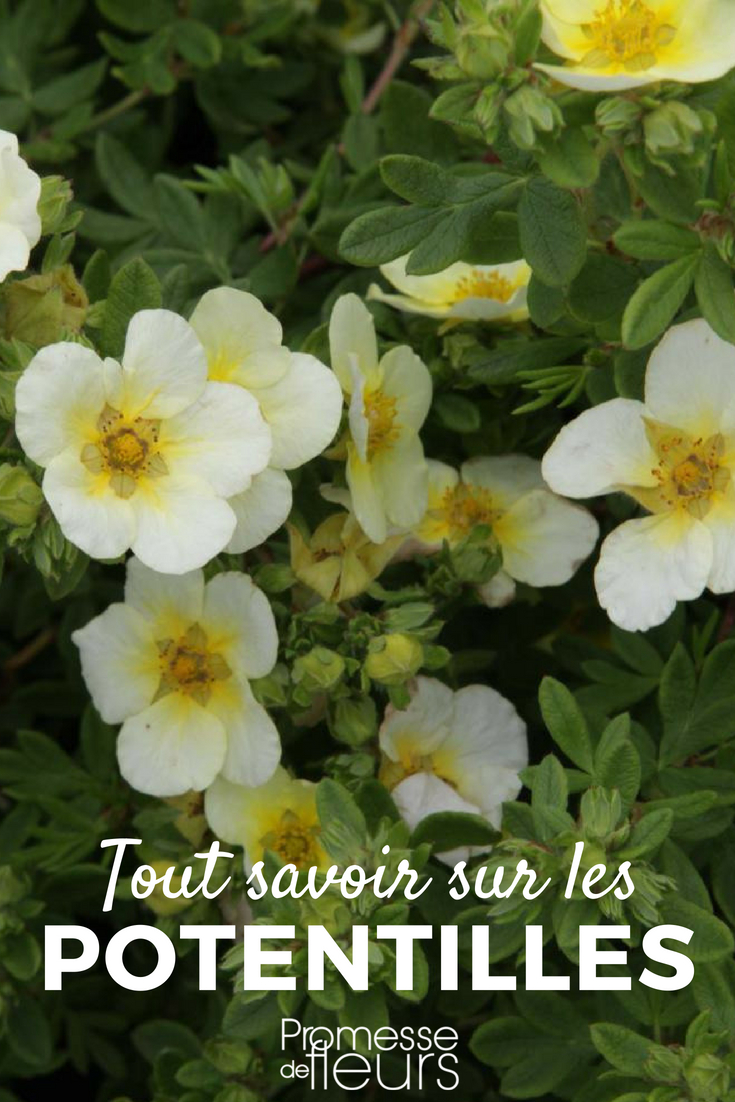


































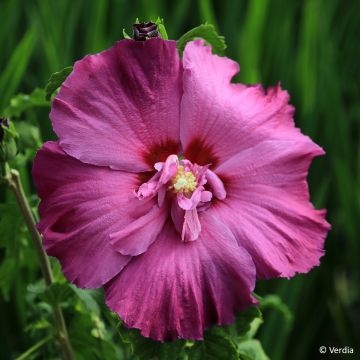
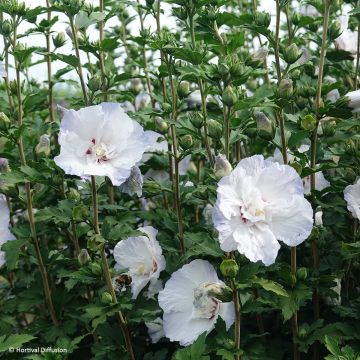


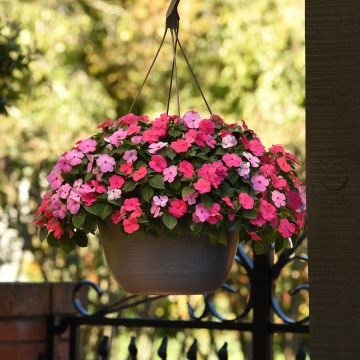
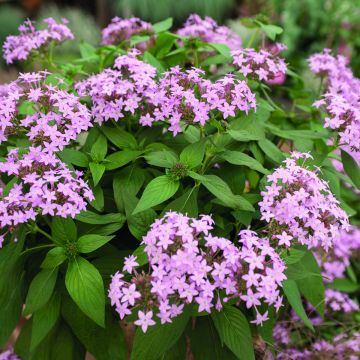
Comments